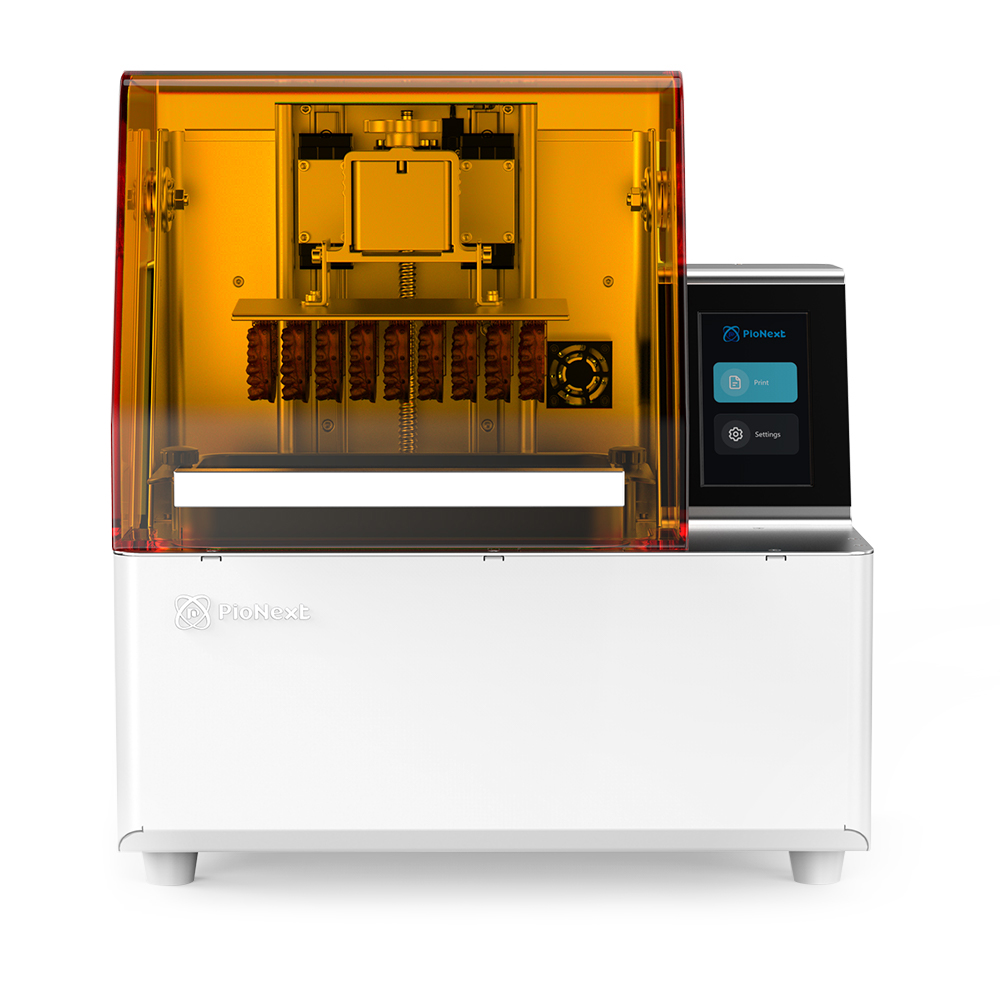Main applications and advantages of 3D printing in the dental field
Dental Orthodontics
3D printing digital model is often used in the process of orthodontic clinical diagnosis and treatment. First, use the impression material to take the mold, then mix the gypsum for reproduction, and finally get the formed gypsum model.
At present, gypsum models are still the mainstream means of diagnosis and treatment in China, but gypsum models have high requirements for air humidity and are easily deformed due to moisture; Moreover, the plaster model is often damaged in clinical practice due to its low material strength, thus losing its reference value. Now, the resin model based on the digital model of intraoral scanning and the 3D printing technology of light curing molding has greater advantages than the gypsum model in terms of precision, strength and easy preservation.
Since Piocreat launched the LCD dental 3D printer, dental 3D printing has been widely used. It also uses photosensitive resin as raw material, and uses a computer to control the ultraviolet beam to make it solidified. This method can easily and automatically produce complex solid shapes that are difficult to make by various processing methods. It has epoch-making significance in processing technology and dental application fields.
Dental planting and repair
In the process of manufacturing 3D printed implant teeth, doctors first obtain the medical image data of the patient's residual tooth root and alveolar bone tissue structure, and extract the data needed to design the bionic tooth root tissue and its surrounding alveolar bone tissue outer structure from the acquired data to establish a 3D model, then convert the model to format, and then transfer the converted file to the 3D printing device for entity printing.
The advantage of 3D printing implant teeth is that it can directly form the whole tooth body containing the root, and it only requires minimally invasive extraction, implant and crown restoration to achieve seamless integration with the original alveolar, reduce the pain of patients, shorten the chair side treatment cycle, and greatly reduce the cost.
Removable denture
Traditional denture processing is mainly done by hand making wax molds and casting crowns, which not only has low accuracy, resulting in repeated rework, but also greatly reduces the comfort of patients wearing dentures. The 3D printed removable partial dentures, with a dimensional accuracy of less than 0.05mm, can meet the accuracy requirements of clinical use for prostheses, and the thickness of the thinnest part of the Dalian connector is only 0.5mm-0.6mm, which can be successfully placed in the clinic without adjustment, making denture shaping more accurate and fast, shortening the doctor's treatment time, improving the clinical diagnosis and treatment efficiency, and greatly improving the comfort of patients wearing dentures, From the aspect of industrial structure, it has accelerated the transformation from labor-intensive industries to technology-based industries.
Application advantages of 3D printing in dental field
High quality and high precision: The quality of finished products in traditional manufacturing is highly dependent on the skills of technicians, which makes it difficult and costly to obtain high-quality dental products. The 3D printer can relatively easily create a fine structure. By building components layer by layer and using software programs to control the process, the 3D model is more stable, durable and accurate.
Improve efficiency and reduce cost: On the one hand, because it is very time-consuming to make manual models in traditional ways, 3D printed digital copies can be sent to technicians electronically in a few minutes, and technicians can work quickly after receiving them.
On the other hand, the high degree of digitalization and intelligence reduces the workload of medical personnel and reduces the labor cost.
Improve better patient experience: 3D printing creates a model of the patient's tooth problem area, which can help the patient get ready for surgery and reduce the patient's psychological anxiety before surgery. Secondly, 3D printing replaces the traditional occlusal impression through oral scanning, reducing the patient's operating pain. The digitalization of the visit process shortens the patient's visit time.


